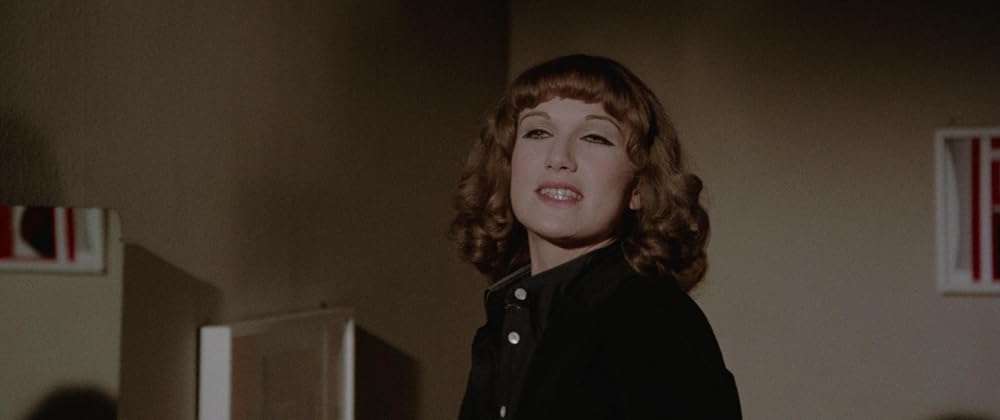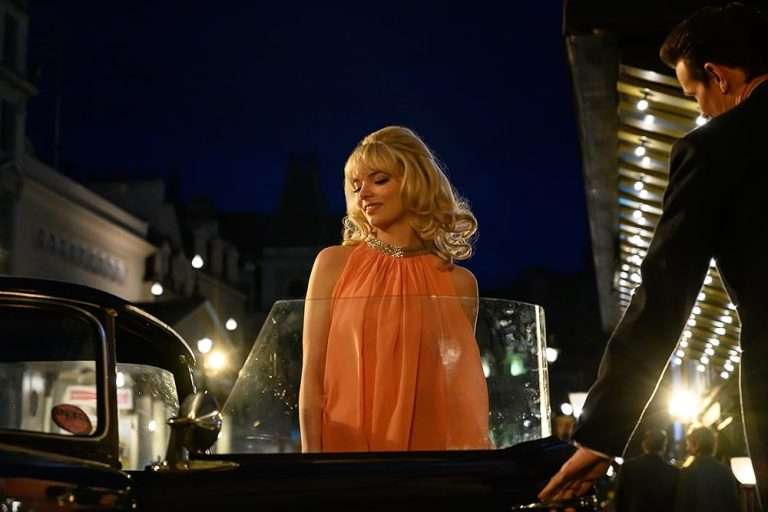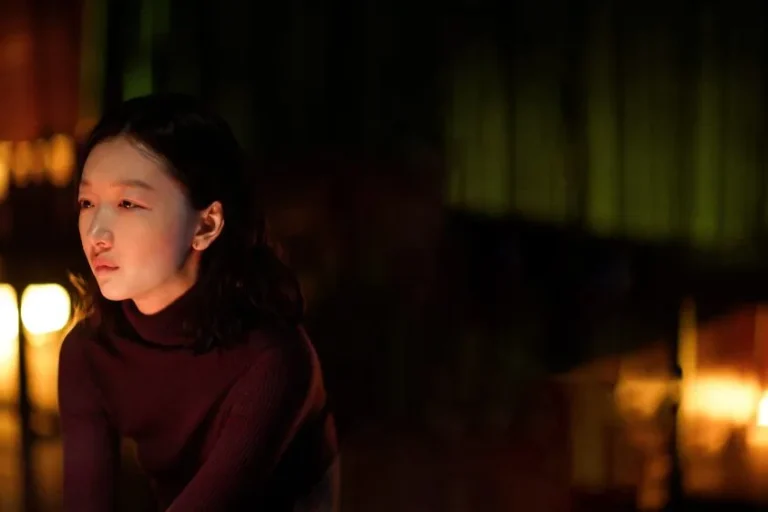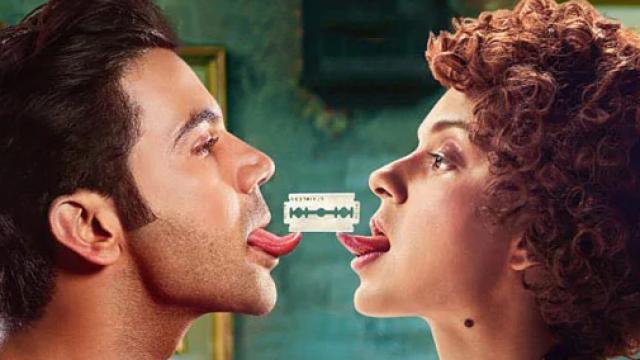About midway into the twisted murder spree at the center of Dario Argento’s Deep Red (Original Title: Profondo rosso), a character is asked who could be behind the killings and answers: “A maniac, who else? It’s always a maniac, and they never catch them.” For anyone remotely familiar with the genre of Giallo (Italian Murder Mysteries) and the works of Dario Argento in said genre, this seems like the most obvious conclusion.
Fractured psyches enhanced by a Freudian touch are often found at the core of Argento’s plots and characters. His craft, a touchstone of the genre (inspired by Hitchcock), especially during the Giallo heydays, is full-on display in Deep Red, echoing the dangerous nature of this plot and characters. Yet Deep Red remains a milestone in the famed genre filmmaker’s career. The film is a transitional shift between the pulpy detective stories that Giallo is inspired by and into the supernatural realm. The duality of this is found right in the opening credits, establishing key collaborators, especially actress Daria Nicolodi and the prog-rock band Goblin. Goblin’s tense synth score plays across the title credits as Argento establishes the crux of the film with his disruptive editing pattern.
In the middle of the credits, he inserts a sharp cut into a violent prologue that earns the film its name. A shadowy figure stabs another person to death; the bloody knife falls to the floor at a child’s feet. Eerily, the scene is accompanied by the chanting lullabies of children. Much like the visual edit, the film’s soundscape walks on a tightrope. At once, the synth score is undercut by this diegetic music, and almost abruptly, as the credits return, so do Goblin’s wild tunes. The interplay of the score and music from within the scene is something Argento returns to, enhancing the horror that unfolds.
When we finally exit the credits, once more, there is a sharp turn to a new musical sequence. A conservatory houses a jazz class in session, with the teacher, Marcus Daly (David Hemmings), on the piano. The clean form of his students impresses him, yet he demands a touch of chaos in their music. It’s almost a joke on Argento’s methods, a bit of schlock to the Hitchcock-styled tension that he adds to his cinema. It’s also something Marcus (a Bourgeois man from the USA) will come to regret asking for in the shadowy streets of Turin.
Despite the very psychological notions at the focus of the murder mystery about to unfold, a key establishment of the paranormal clashes with this idea. Professor Giordani (Glauco Mauri) hosts a parapsychology conference with an extraordinary psychic medium, Helga Ulmann (Macha Meril), as his guest. Her telepathic senses are almost instantly overwhelmed by a perversely mentally ill figure in the audience.
The camera work here sets up the key themes Argento hopes to explore through the plot. At first, the event is captured with the camera entering the setting, with curtains opening for the viewer to be welcomed into the film. There are sharp cuts to odd angles, capturing the scene from a bird’s eye view and then carefully zooming close to the mind of Helga. A foreboding indication of disaster and trouble is imminent when she has a nervous breakdown. As she reiterates her premonitions, the camera takes on a shaky form as someone in the audience races off; the POV of the murderer is crucial to understanding Argento’s desire to examine voyeurism in the film.
Later, as Ullman discusses her fears with Giordani and then continues home filled with paranoia and tension, the camera traces her from a distance like a peeping tom. Argento, through the killer, clearly wishes to take charge of his own fascination by peering into the lives of those beyond his reach, implicating the audience along with himself. Anyone who has experience with this type of thriller, whether it is the original master Hitchcock or inspired successors like De Palma, already knows what comes next. The killer attacks brutally and violently, with blood spurting red as Ullman struggles for her life. Downstairs, outside her building, Marcus is in a philosophical debate with Carlo Mananiello (Gabriele Lavia). Carlos is a pianist, much like Marcus, but with a terrible alcohol addiction.
They hear screams, Marcus’s sense of curiosity kicks in, and he’s there to try to save Ullman, a little too late, as the glass shards of her window slash right through her neck. The police arrive, testing Marcus’s nerves and recollection of events. Chief Calcabrini (Eros Pagni) is humored by Marcus’s hazy memory of the whole ordeal; a nosy reporter, Gianna Brezzi (Daria Nicolodi), pegs him instantly as a pivotal witness to unraveling the case. There’s enough room for their probing into his appearance as well as his status as an immigrant to consider him the culprit. This is especially true once the body count multiplies, yet he is left free to play amateur detective for the rest of the plot.

It’s an easy setup for the protagonists’ arc, especially since Argento has used this before. Yet, Argento chooses to have a bit of subversive fun with the protagonist in Giallo. In that case, the casting of Hemmings is a masterstroke. It parallels his role in Michelangelo Antonioni’s Blow Up, where his own obsession with capturing a murderer got him caught in the web of accusations and discussions on voyeurism. Here, too, Marcus becomes a substitute for the audience; his fixation with the murderer isn’t really to clear his name as it is to play detective and satiate his own urges.
The tangible reasoning Argento provides Marcus early on to go with the psychological comes in the form of his play with hazy memory. Memory and its troubling dichotomy between reality and perception remain central in Argento’s Giallo films. His protagonists are often troubled by the Freudian collision between what actually is and the dreamlike nature of what they perceive as their reality and memories.
That fractured nature of the psyche is echoed beautifully in the film’s editing, much like the opening; Marcus’s first sight of the murder is intercut between flashes of Ullman’s struggles, the killer’s gloved hands reaching out in POV (performed by Argento himself), and quick smash cuts zooming into his expressions. In contrast, his race to save her is captured in a single take – an eerie shot as Marcus walks across her hall filled with devilish paintings. It’s a divergent method in which Argento rushes the cuts and then slows the movement of the camera. He dares the audience to be attentive as he reveals the killer within the first few minutes of Marcus’s investigation.
Argento asks bold questions of the audience: are we simply reveling in the deep red horror of violence he shows us, or are we also paying attention to the tragedy at hand? That playfulness continues forward as Marcus goes deeper into the investigation, ably supported by Gianna, desperate in search of a great crime story.
Their relationship also allows the film to slow down and develop a better sense of Argento’s characters while also adding to the red herrings within the mystery. In the newly restored two-hour cut, the film spends more time on the duo as they grow into a couple. Asked to act more than react (like the rest of the plot), Hemmings feels somewhat uneasy. It is, however, Nicolodi who then truly carries the film; her spunk contrasted with her shifting tones, especially as things get intense, adds to the mystery of the killer’s identity. It is no wonder that Nicolodi would go on to become a crucial part of Argento’s life and filmography, helping pen his most famous work, Suspiria. She also assuages a ton of criticism that is often levied Argento’s way regarding the treatment of the victims in his violent films, almost always women.
Within the levity of the building chemistry between Marcus and Gianna, Argento highlights how easily his mindset allows Marcus to underestimate the feisty reporter. His deep-rooted biases, especially in terms of gender, come to bite him, not only when it concerns her but also other women he is dismissive of, especially the revelation of the central antagonist. Gianna proves to be a key in helping him even when he doesn’t want help, especially saving him from a burning “haunted” house.
Much like the lullaby we hear during the prologue, the supposedly haunted house becomes a key fixture in Marcus’s pursuit of the murderer. These elements form the backbone of how Argento would go on to change his fascination with Giallo directly into the supernatural genre. For a film that clearly has a human killer on the loose, Argento isn’t afraid to spruce up the tension with a mystical aura. As the inciting incident establishes, the paranormal is as much at play as the psychological. The second murder, in fact, is crafted not only through voyeuristic camera angles but also by objects such as hanging dolls and dead crows to scare the victim and the viewer. The steam of hot water that eventually burns the second victim to death also builds a haunting atmosphere akin to a witch’s brew.
During Marcus’s own excursions into solving the deaths, his entry into the said house itself has an ominous feeling, especially when Goblin’s score rears its head. The madness of the non-diegetic music is once again sharply cut by the ring of the lullaby that accompanies the killer’s entry into the fray. His voice, whispering the names of his victims, matches the howling winds added to the sound mix. Editor Franco Fraticelli dances between long shots (to enhance the voyeurism) and smash cuts into extreme close-ups to sell the moments of disgusting violence.
Argento uses cliché horror tropes, such as the kinetic movement of the camera, to truly contrast the razor edge at which he cuts his film. This is no clearer than in the climactic moments where the characters who have committed crimes pay for them. A cruel sense of morality sees the antagonists ensnared in their own traps, paying the price even for the protagonists’ intrusiveness. This is also true of the viewers who slowly become privy to the true nature of the prologue. As an audience, we are complicit in doing nothing but enjoying the madness that unravels into horror.


![Badlapur [2015] : An Exercise in Rage](https://79468c92.delivery.rocketcdn.me/wp-content/uploads/2017/05/327227-badlapurnew700q.jpg)
![Beyond Words [2017]: ‘TIFF’ Review](https://79468c92.delivery.rocketcdn.me/wp-content/uploads/2017/09/beyondwords_09-768x384.jpg)


